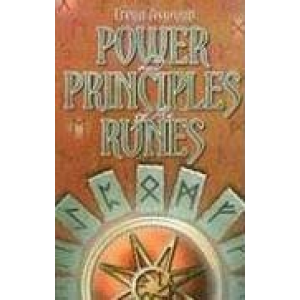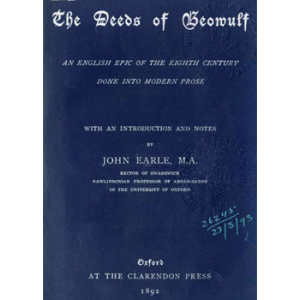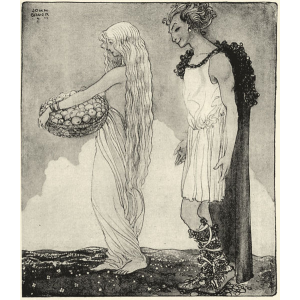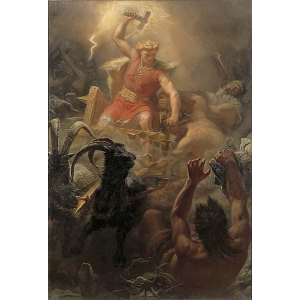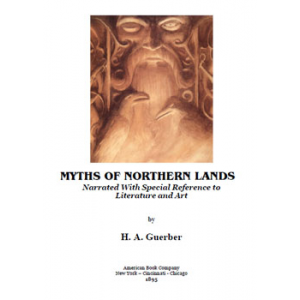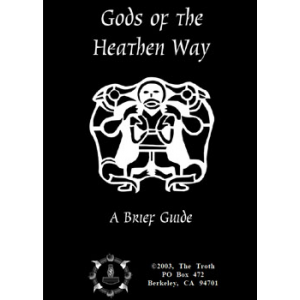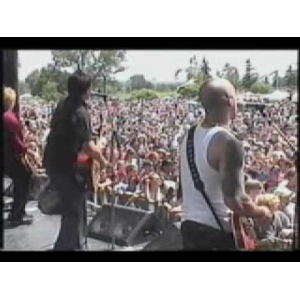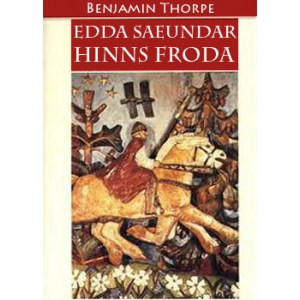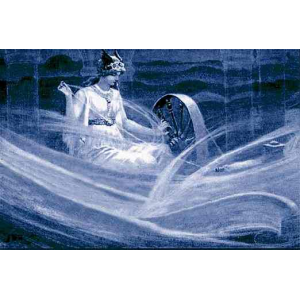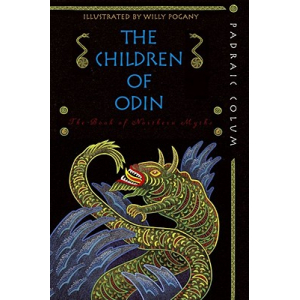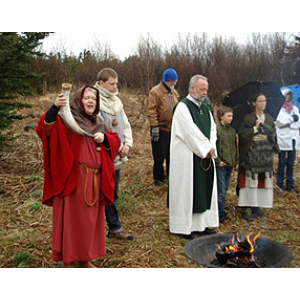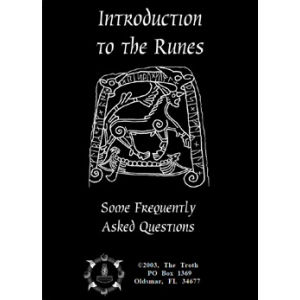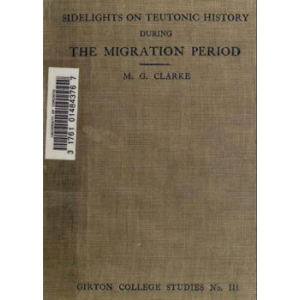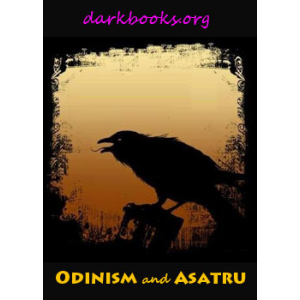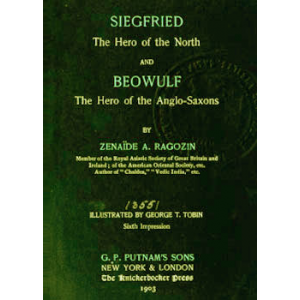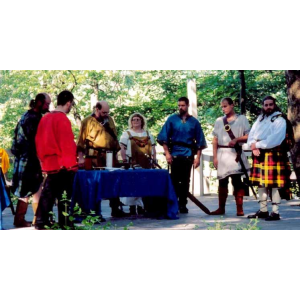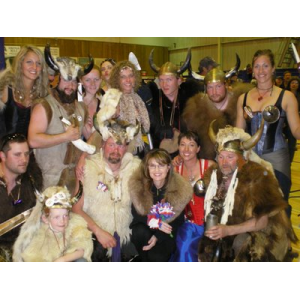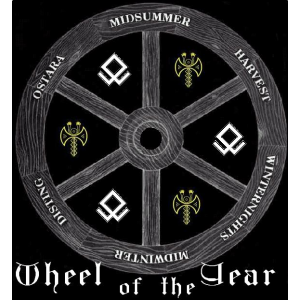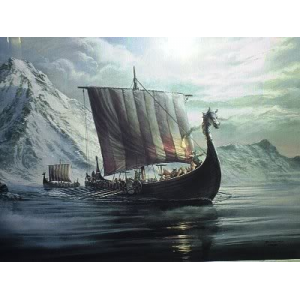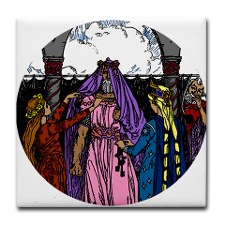
An important line is drawn within the Odinist community. The ideas of Universal Odinism and Folkish Odinism matter very much, both to the practitioners of the religion and those studying it. Along with this is the idea of Odinism verses Asatruism. Gardell writes about the distinction. “Nonracist Asatru is a polytheistic
Spiritual Path that welcomes and genuinely interested person irrespective of race or ethnicity. Dismissing nonracist Asatru as an effeminate New Age Corruption, the racist position defines Asatru/Odinism as an expression of the Aryan racial soul and hence an exclusive creed open to whites only.”
Universal Odinists (“Nonracist Asatru”) tend to reflect the more “new age” tenants of the faith, holding the view that anyone who believes or “is called” (Generally by Odin) can be an Odinist without respect to heritage or ethnicity. This is not to say that they are not serious about their faith and practices, nor that their beliefs do not reflect their heritage, only that they do not see this as a prerequisite to their faith. It is important to note that this belief was probably more closely shared with the original Odinists than what the Folkish Odinists believe. Race is mostly a social construction, and Vikings tended to be very good at assimilation, as well as apt to for relationships with people who were not Norse themselves—their religion would not have been exclusively for other Vikings (Gardell). A good example of this attitude is “Ufheddin the Odinist”, who responded to a short survey asking about his beliefs. When asked about who can become an Odinist, his answer was short and sweet. “Anyone drawn to the path with the strength and will to endure it.” “Osgot the Odinist” shared this belief, “Anyone can become an Odinist if they truly understand what that means, and accept both the belief and the way of life that accompanies it. Being an Odinist is a personal choice. You do not need to be inducted or invited to a community. You simply decide to be so, and begin.” Although reliable numbers are hard to find, this stance seems to be the view of most Odinists. Many Odinists and Odinist groups take measures to distance themselves not only from overtly racist
Interpretations of their faith, but also from any indication that race or ethnic heritage has any part in their religion.
“It has been the sad fate of Asatru to have had our faith highjacked by some subhuman maggots who are trying to hitch their sick and twisted political wagon to our faith.It is the position of The Raven Kindred, Asatru Today, myself personally, and all legitimate Asatruar that race and ethnicity are completely irrelevant to Asatru and Norse Paganism. Asatru is a religion. It is open to anyone who wishes to join it. Those persons who would limit its membership on the basis of race, sex, sexual preference, or other such criteria are not only mentally challenged, but are traitors to the Gods. If the Gods call someone to their service, it is not our business to deny them based on their genetic origin. To do so is to go against the Gods, and thus is to commit treason against Asgard.”
The flipside of this view is the Folkish Odinists. This is the group that believes Norse blood is required to legitimately worship the Old Norse gods. This is where the line between religion and racism becomes blurred—especially given the fact that many people may not “look the part” but may in fact have more Norse blood in them than someone with blonde hair and blue eyes (genes can be tricky like that). These are generally the people who will point to the fact that (almost) every culture has its own pagan or heathen ancestral religion to be perused.
Even within Folkish Odinism there exists a division, one that is made both by Odinists themselves and academics. Some (classified as “Ethnic Odinists”) define Odinism as a heritage—their ancestors somehow link them to this set of spiritual beliefs. Of course, this contains an odd logic jump somehow connecting genetics to spirituality. Other Folkish Odinists are overtly racist. One estimate states that it is probably no more than fifteen percent of practicing Odinists who take an overtly racist approach to their
Interpretation and practices, although the number of “ethnic” Odinists is probably much higher.
Timothy G. Baysinger, in the Journal of Homeland Security Affairs, further describes the distinction, and classifies those who are more right-wing and white-supremacist as “Odinist” while allowing the title of “Asatru” to those who take a nonracist approach. Unlike most other scholars, Baysinger does not seem to make much of a distinction between “ethnic Odinists” and “racist Odinists” seemingly because the only real feature that distinguishes one group from the other is the level of action. Baysinger discusses important differences in theology and interpretation between the two groups. Baysinger's Odinism vs. Asatru:
----------------------------------------------------------
Odinism
Rejection of Christianity in favor of Norse gods—attracts followers using the promise of fraternal relations and a flexible belief system
Right-wing and white-supremacist
“Accept the validity of conspiracies [especially involving Jews] when viewing the events of history.”
Use of the “warrior principle” in ideology—leads to (attempted or planned) retaliation for “perceived past injustices.”
“Hold racist feelings and opinions…merge[d] with racial mysticism”
“Oversimplification of complex information associated with the revitalized tribal ideas of the Vikings.”
----------------------------------------------------------
Asatru
Rejection of Christianity in favor of Norse gods—attracts followers using the promise of fraternal relations and a flexible belief system
Rejection of white-supremacist ideology
Most do not embrace conspiracy theories of history
May or may not believe in/embrace the “warrior principle” but generally will not apply it to revenge for past events
Rejection of racist ideas
“Do not accept efforts to simplify their reconstruction of the communal, magical, and religions practices as they apply to modern society.”
----------------------------------------------------------
Betty A. Dobratz offers another criterion for differentiating between Odinists who use their religion to further racist or white nationalist goals and those who simply believe in following one’s own heritage. “The development of racial pride is key in distinguishing whites who belong to this movement from whites who do not.” She quotes research done in the 1970’s which points out that most white supremacists are unable to see the distinction between culture and race, an essential difference for most people. Of course, the definition of what constitutes “race” has also changed dramatically over time, moving from largely being viewed as something innate that really did separate people to a purely social construction to something that is somewhere in between, although now scientific studies of race may group people who look nothing like each other based purely on genetics. Dobratz points out the tricky nature of pinning down a definition, especially among white supremacists. “The sociopsychological view of racism ‘has in fact ignored the most central feature of racialism, namely the meaning of race to the racialist.” White supremacists tend to view the terms “racism” and “racist” as positive ones—simply as someone who loves his race (here we see the confusion between race and culture). “It in no way means hate for any other race, it simply means love for my own race,” said one man she interviewed. She is also careful to note that the distinction between racial and nonracial Odinists is often blurred—how do we tell the difference between pride and racial mysticism?
Free eBooks (Can Be Downloaded):
Gottfried De Purucker - Occult Glossary A Compendium Of Oriental And Theosophical TermsStephen Mcnallen - What Is AsatruAnonymous - Worship And Spirituality During And Between The Asatru HolidaysAnonymous - Odinism And AsatruHermes Trismegistus - Book Ix A Universal Sermon To Asclepius
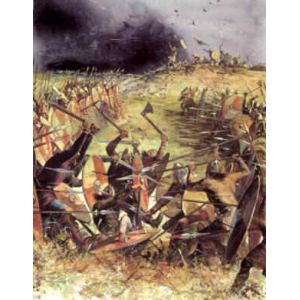 One day Heimdall left his place in Asgard to wander down upon the earth as the Gods were wont to do. He had not gone very far ere he came to a poor hut on the seashore, where he found Ai (great grandfather) and Edda (great grandmother), a poor but worthy couple, who hospitably invited him to share their meager meal of porridge. Heimdall, who gave his name as Riger, gladly accepted this invitation, and remained with them three whole days, teaching them many things. At the end of that time he left them to resume his journey. Some time after his visit, Edda bore a dark-skinned, thickset male child, whom she called Thrall.
One day Heimdall left his place in Asgard to wander down upon the earth as the Gods were wont to do. He had not gone very far ere he came to a poor hut on the seashore, where he found Ai (great grandfather) and Edda (great grandmother), a poor but worthy couple, who hospitably invited him to share their meager meal of porridge. Heimdall, who gave his name as Riger, gladly accepted this invitation, and remained with them three whole days, teaching them many things. At the end of that time he left them to resume his journey. Some time after his visit, Edda bore a dark-skinned, thickset male child, whom she called Thrall.


